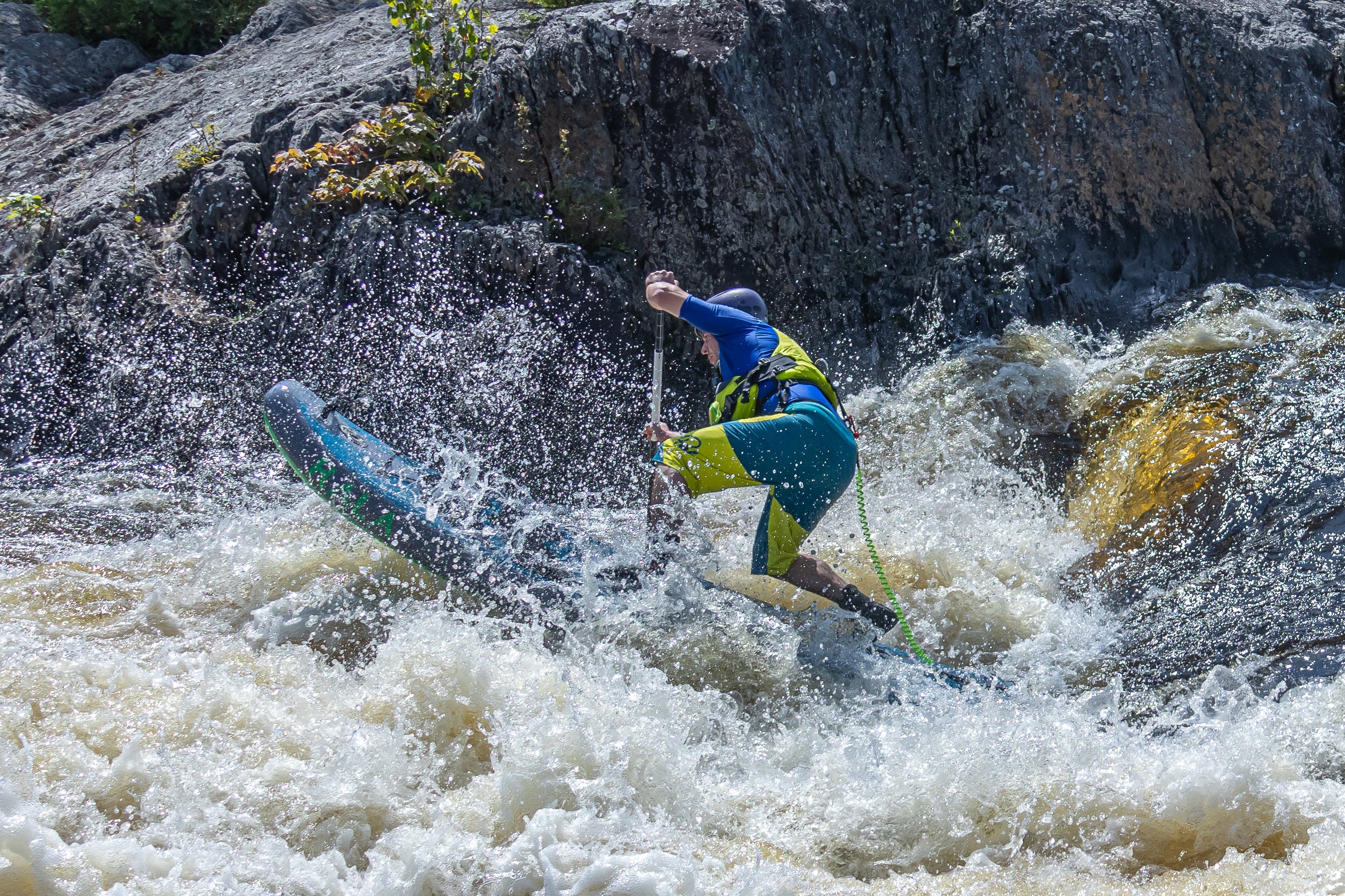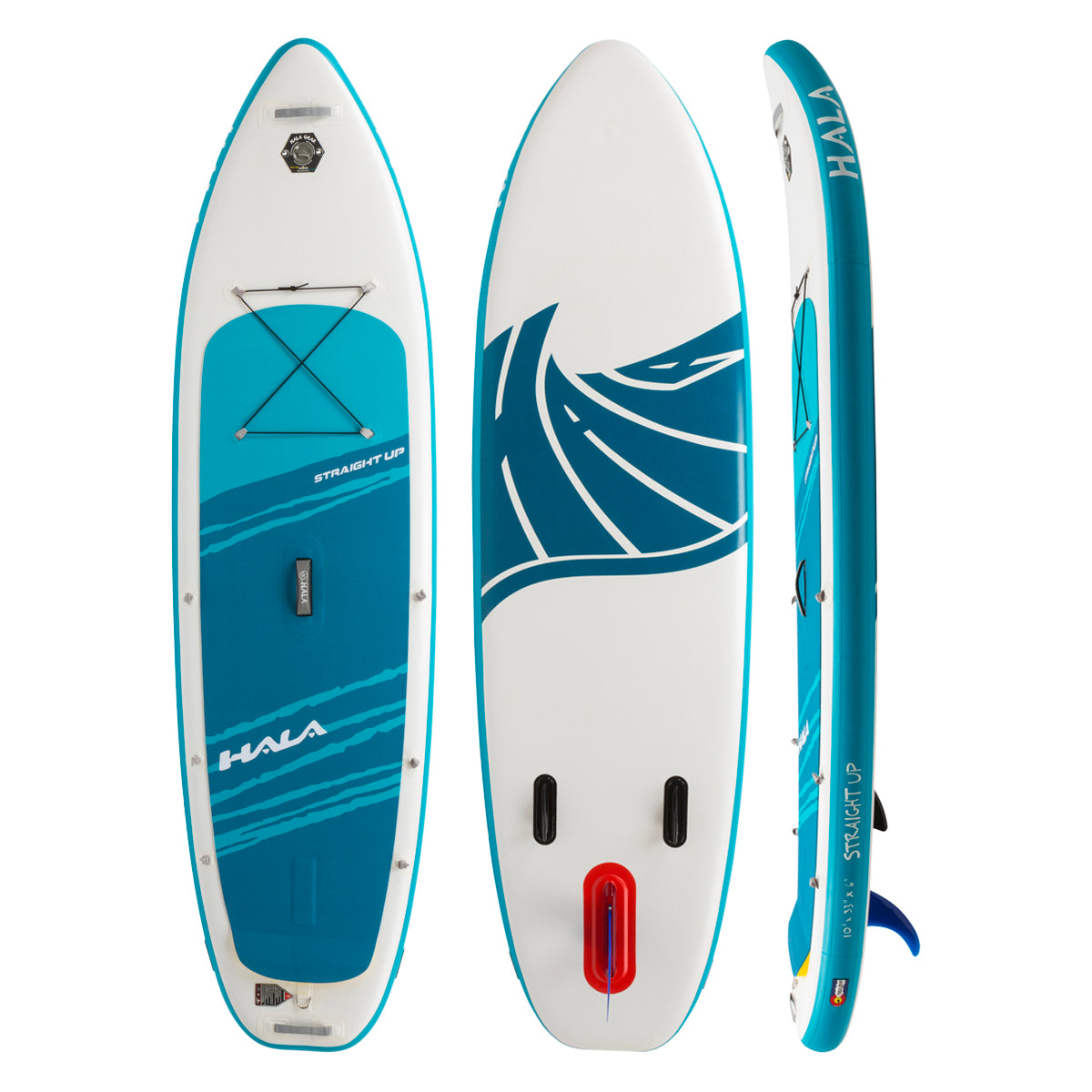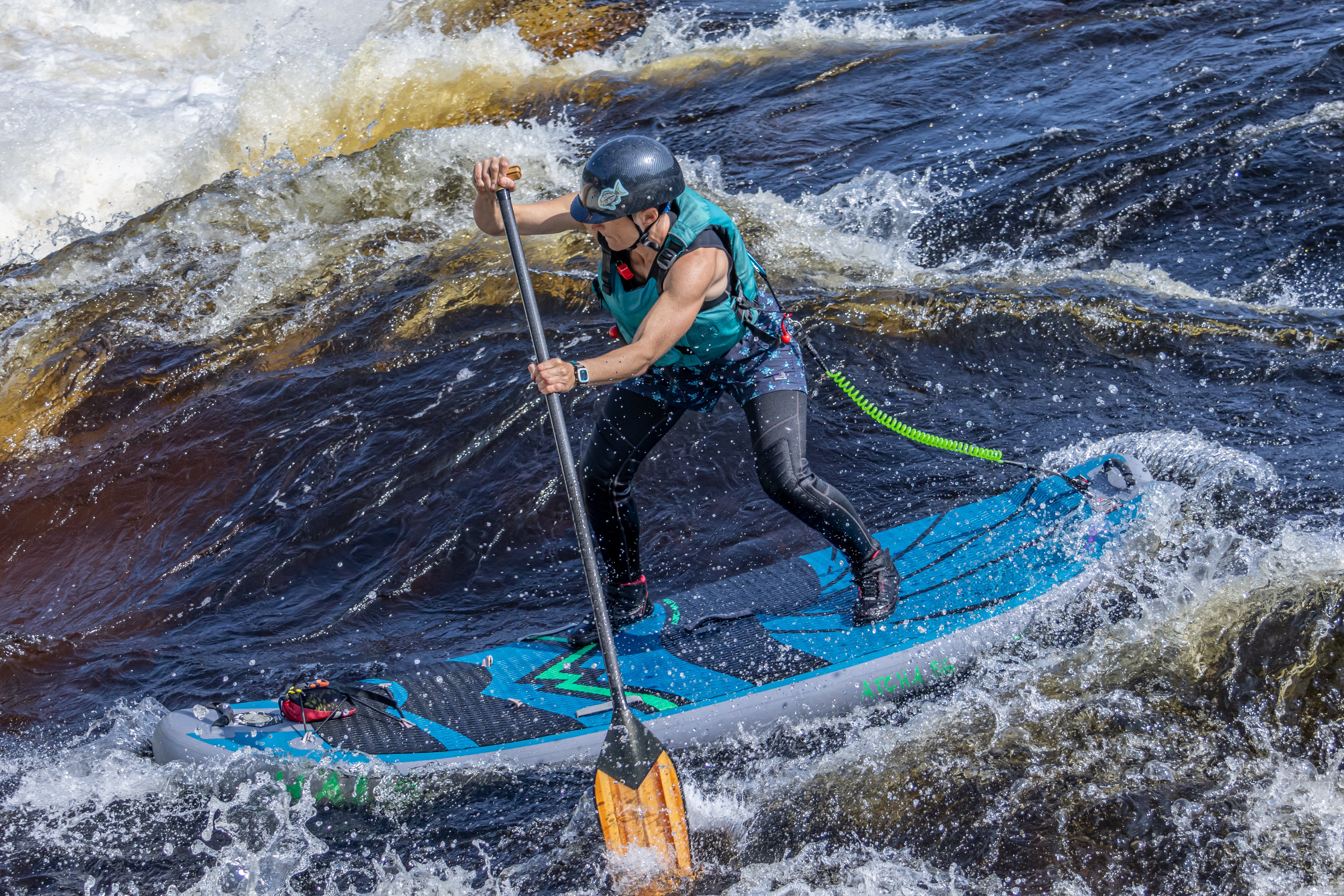
White Water SUP and Height Management
Whitewater Stand-up paddle boarding requires skills and techniques that are not found in flatwater situations. For example, height management is key to successfully navigating whitewater lines, waves, and drops.
Join Hala Team Paddler Jim Miller as he explains height management, why it’s useful, and when to use and not use height management skills. We’ll also discuss different whitewater stances and when to use them.
What is Height Management?
In a nutshell, height management is the ability to move upwards and downwards, positioning your center of gravity closer to your center of balance (the middle of your stance in relation to the board and your feet).
For instance, when you perform a low brace, support stroke, absorb the impact of waves (much the same as skiing moguls), or go down to one or both knees. Sometimes, you drop all the way down to a horizontal position, hug the board, and pray to the river gods.

Why is it useful?
Mastering height management techniques, including a low or back brace, a knee touch, and a full kneel, can stop you from going for a swim. Minimizing your time in the water means success, and you lower the risk involved with swimming, hitting rocks, etc.
What’s more, correct height management can decrease the distance that you fall off your SUP. Falling from a lower height generally means falling closer to your SUP and, as such, being able to climb back on quickly.
Likewise, falling from a lesser height reduces the force with which you fall. This is a benefit, as falling onto rocks or other boarders from full standing can be dangerous.
Let’s take a closer look at a few of the various height management maneuvers.
Low Brace

In a low brace, you can lean on the paddle to prevent falling off. By lowering your stance and placing the paddle perpendicular to the board, paddle face up, you can push off the water surface to help keep yourself on the board.
A low brace works best when bending your knees and lowering your stance, also known as height management. The same is true for a back brace, although long term, some paddlers think this may not be great for the shoulders—time will tell.
Knee Touch
The height management technique of touching a knee to the board is a great temporary way of stopping yourself from falling off. (Some purists will call it cheating—maybe it is, but it’s better than being in the water!) The best part is that with a quick knee touch, you can quickly and easily recover to a standing position.
Full Kneel

A full kneel has its cons (More on that next). However, it can be a great way of introducing beginners to whitewater SUP. When most people begin whitewater SUP, they need to develop the required balance and understanding of how a board moves in whitewater. Going to a knee or two helps build confidence and balance. The next thing you know, you’ll be standing with ease on moving water.
When is Height Managment Problematic?
In big water, going down to one or both knees, i.e., the full version of height management, can have unintended consequences. When water comes over the nose of your SUP, it suddenly has a much larger surface area (your entire body) to hit. This impact on your chest and torso will likely knock you off your board.
On the other hand, when standing, the rush of water tends to part around your legs, and strangely, you are more likely to stay on the SUP. This feels contrary to what your brain tells you at the moment, but it makes sense. A smaller surface area = less of an impact to knock you off.

Another height management technique that is sometimes problematic is the one-knee touch. Going to one knee can also place significantly more weight on one side of the board, making it less stable and, therefore, more likely to be flipped.
When you have two points of contact on one side, your knee and your foot, versus the other with one point, just your foot, your weight is uneven. In fact, two-thirds of your weight is on the knee-touch side or edge of the SUP, and if used incorrectly, this can cause more swims and flips.
When going to one knee, Jim recommends making it a quick, temporary stance. Try to stand back up or get on a second knee as quickly as possible to avoid mis-weighting the board.

You can become dependent on the knee touch. Jim has seen many people go to their knees and end up doing it subconsciously, and it can be hard to remove it from your paddling once it is in there.
Below are a few key takeaways for maximizing height management with the correct stance.
Flatwater Stance
A flatwater stance, with your feet parallel, side by side, does not offer much room for movement and height management. A flatwater stance is limited by the width of the board, which makes it hard to lower your center of gravity.

In a flatwater stance, you are square to the board. This means waves and water surges hit both legs at the same time and force your weight onto both heels (or toes) at the same time, making you less stable and adaptable and more likely to fall off.
The one big advantage to a flatwater stance is the ease of swapping sides and cross-deck paddling. Despite this, we recommend a more dynamic and surfing stance for whitewater SUPing and height management.
Surfing Stance
A surfing stance is the preferred stance for whitewater paddle boarders. You can place your feet any width apart, but most paddlers feel best around shoulder width. The surf stance allows you to rotate your hips and utilize your core to paddle.
It also makes standing back up from one knee easier.
The most significant benefit of the surf stance is that crashing water hits your legs one at a time or impacts your balance one foot at a time. This allows you to compensate with the unaffected leg and gives you time to lower your center of gravity and regain your balance.

Wide Surf Stance
A wide surf stance is initially the most stable platform, but it also has a downside. Once your legs are fully stretched out in a crazy wide stance, it is very hard to lower your center of gravity any further (unlike the previous stance).
While a wide surf stance is initially stable, it reduces your ability to counteract what the water does to the SUP and your balance point, so if you lose your balance, you are more likely to swim. A big plus is that subconsciously, it makes you feel more stable and gives people the confidence to try bigger rapids.
Practice Makes Perfect
To practice height management and get comfortable moving your center of mass around the board, you have to get out there and practice! Play around with the three stances above in a mild rapid. Or have someone give you a gentle push to see what happens to your balance in all three stances (make sure a mat or soft landing is below).
Once you have your stance set, try adding height management to your braces and practice knee touches. With the optimal stance and the ability to lower your center of gravity, your balance will be out of this world stable! You’ll be dropping waterfalls before you know it!

________________________________________________________________________
Jim Miller hails from the Highlands of Scotland where he has been an outdoor instructor and mentor for more than a decade. The only thing that makes him happier than dropping falls on his SUP is helping others excel in the great outdoors.
When he's not scouting and running new rivers, James helps instruct instructors in a variety of outdoor disciplines including mountaineering, climbing, canoeing, kayaking, and white water rafting.



Leave a comment
This site is protected by hCaptcha and the hCaptcha Privacy Policy and Terms of Service apply.